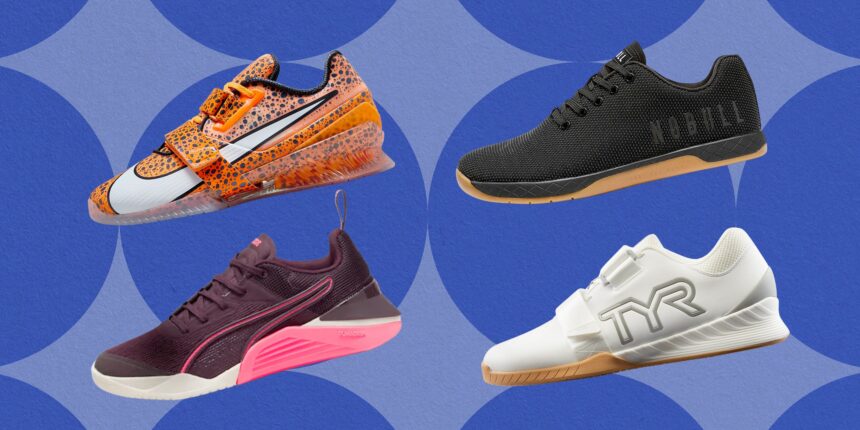Stability is key: Shoes made from sturdy materials with a stiff, wide sole will help you feel grounded while strength training, Dr. Gremillion says.
On that note, you don’t want a ton of cushioning underfoot, because too much padding can throw off your form and balance, Tiffany Thompson, an NASM-certified personal trainer and Future app trainer, tells SELF. We love a good, foam-laden sneaker (and your shoe can have some cushioning if you plan to use it for cross-training), but a harder sole is the better choice for when you’re lifting.
When it comes to heel drop—or the difference in height between the heel and midfoot—it’s dealer’s choice. The best heel height for you really comes down to personal preference, Dr. Gremillion says. A flat shoe enables you to push through your heels, helping you move weights up with more force, which is useful for exercises like deadlifts. On the other hand, an elevated heel increases your ankle’s range of motion, which can help you maintain your posture and get deeper into certain lifts, like back squats, Thompson explains.
Dr. Gremillion adds that shoes with raised heels may be useful if you’re working on improving your form, as they can help keep your spine straight and your abs engaged. Most pairs are between 18 and 20 millimeters tall under the heel, although you can find lower and higher options (trying on a few different pairs can help you find your preferred height).
If you like a snug fit, consider a pair that has both traditional laces and an adjustable midsole strap—that combination should keep your feet from shifting mid-rep. Have sweaty feet? Look for a shoe with mesh panels and perforations, which allow for better breathability without sacrificing structure. Ultimately, the shoe you choose should make you feel comfortable and confident, and not distract you from your lifts, Dr. Gremillion says.
Read the full article here



